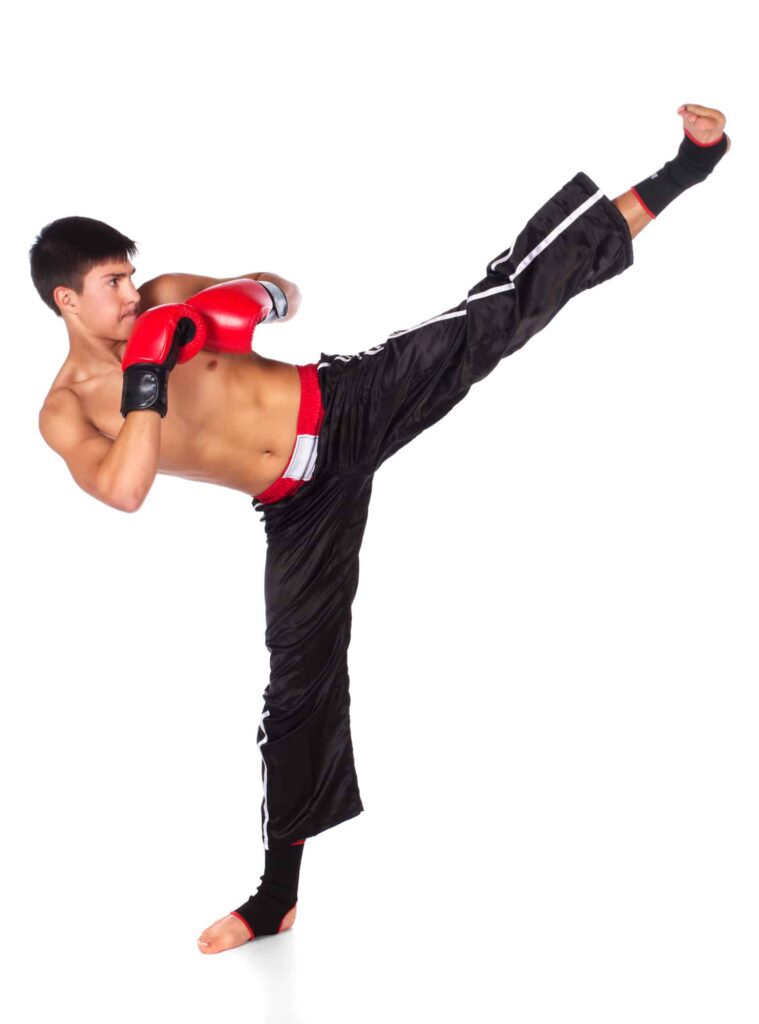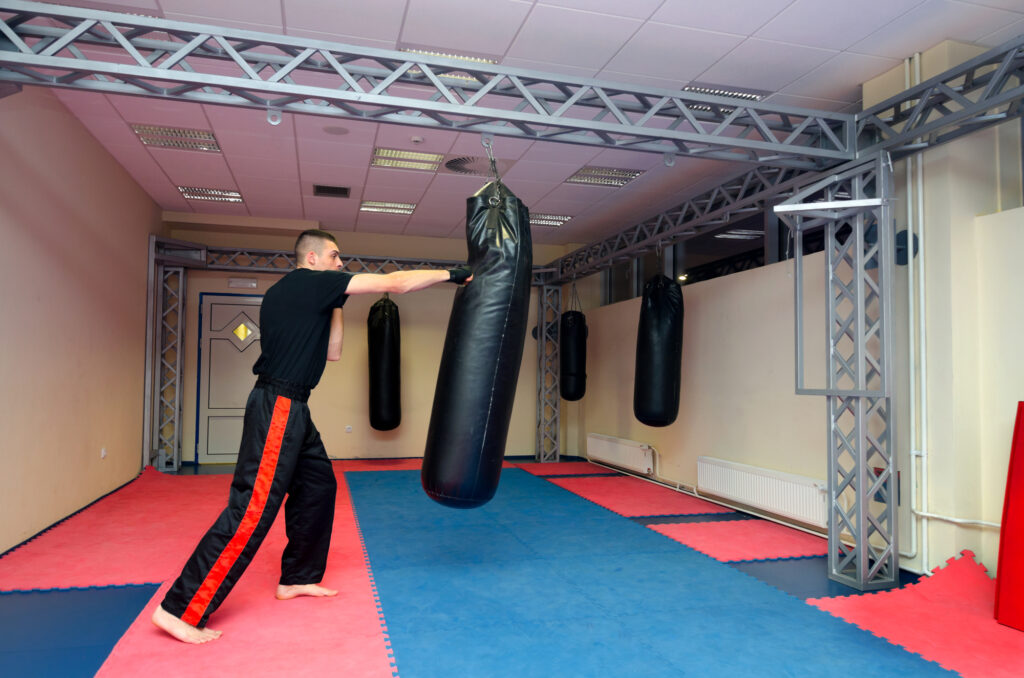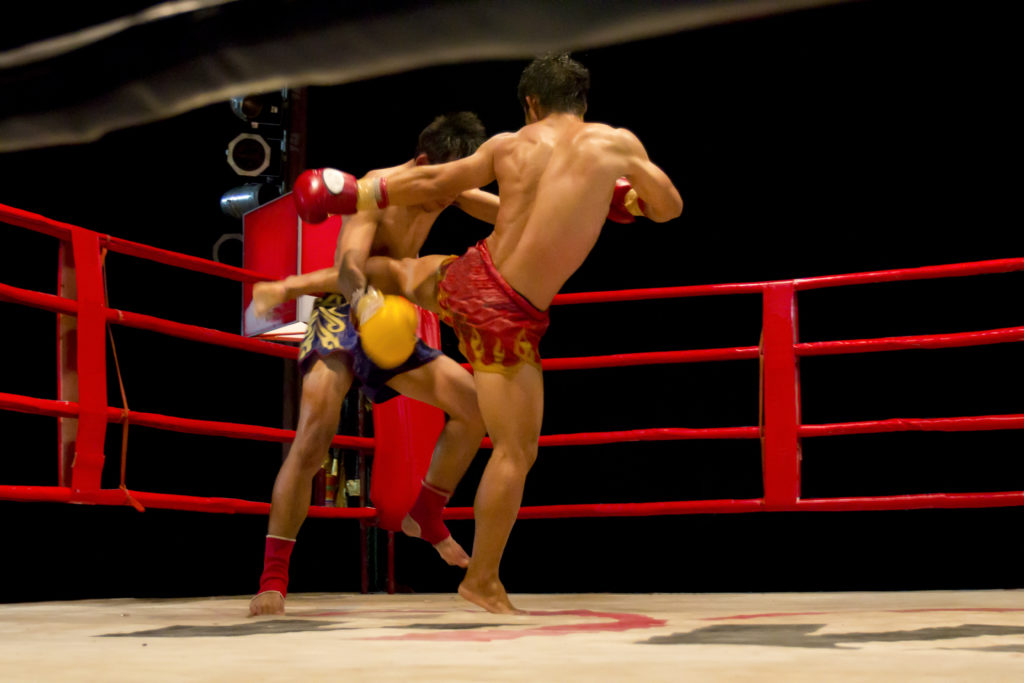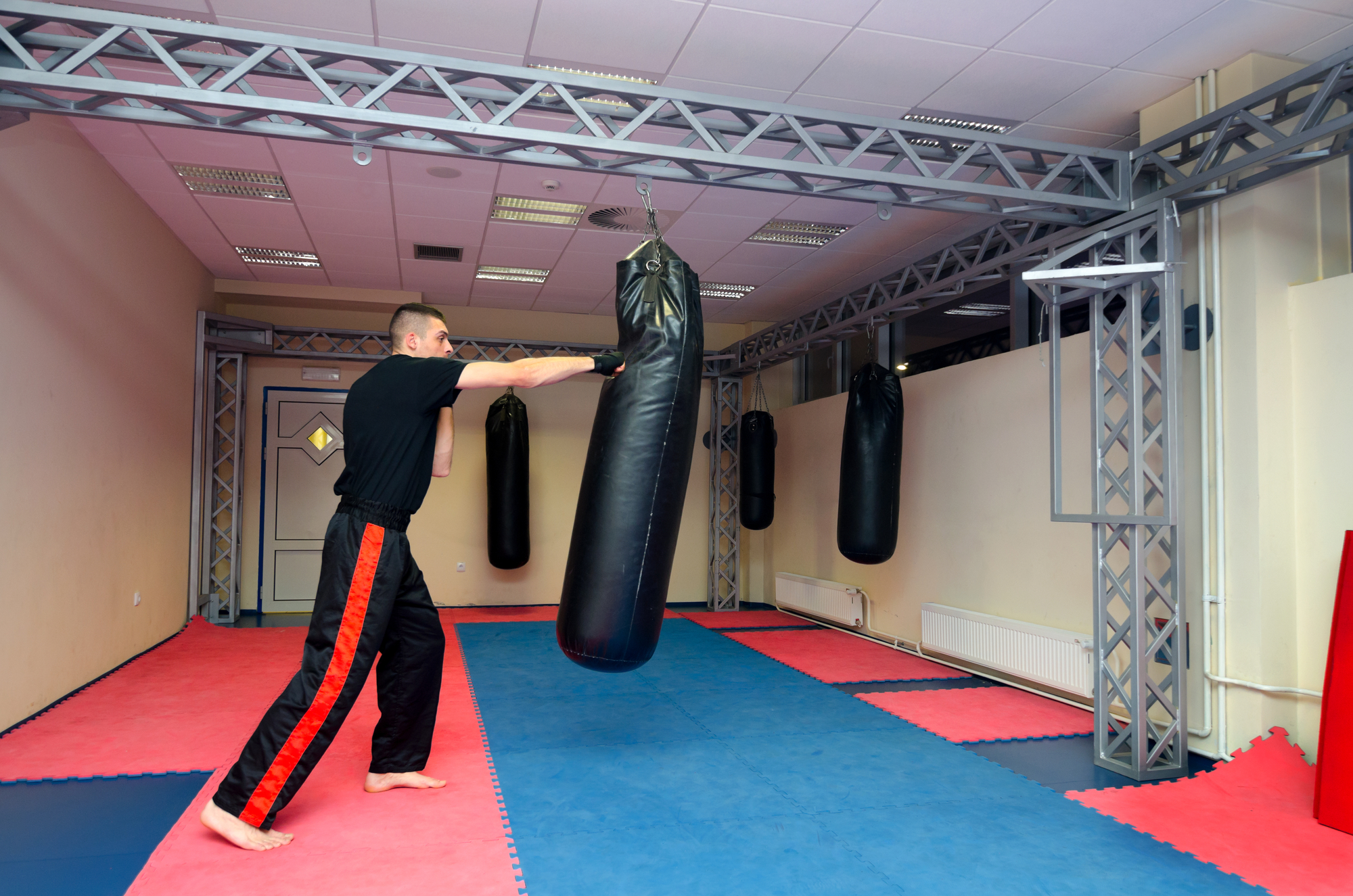Which is more effective in fighting and who would win in a muay thai vs savate fight?
This question, like any other ‘style vs style’ fight match up is rather subjective and a matter of opinion when it comes to which style is better or more effective.
At the end of the day in a real fight or in actual combat often it is the more determined and better conditioned fighter who has the best change of winning rather than the style.
That being said some styles are more suited for the ring and as a combat ‘sport’ and others for real world actual combat where there are no rules i.e Krav Maga.
This post will look mainly at the key differences and similarities when it comes to Savate vs Muay thai and also look at how these two styles have performed throughout history in terms of actual combat.
Savate – Origins and History
Savate is also known as French kickboxing and comes from France.
The development of Savate can be traced back to the 18th century in France, particularly in the seaport of Marseille.
Savate emerged as a fighting style that combined elements of English boxing with kicks and strikes using the feet.
The roots of Savate can be linked to street fighting and self-defense techniques practiced by sailors and street thugs in the rough neighborhoods of France.
Savate was primarily developed as a means of self-defense against various forms of attacks, including armed assailants.
Over time, Savate began to incorporate techniques from other martial arts styles, such as French street fighting, Asian martial arts, and even cane fighting techniques.
In the early 19th century, Savate gained popularity as a combat sport and started to be practiced in a more organized manner.
It was during this time that rules and techniques were formalized, and the sport began to be regulated. The use of shoes, which is a distinctive feature of Savate, also became an integral part of the style.
Savate continued to evolve and gain recognition throughout the 19th and 20th centuries. It became an established combat sport in France and spread to other parts of Europe and the world.
Today, Savate is practiced as a competitive sport with its own set of rules, techniques, and scoring systems. It is known for its dynamic kicks, quick footwork, and precise striking techniques using both the hands and feet.
Savate vs Muay Thai – Key Differences
Below are the main differences between the two styles of Thai and French kickboxing.
Use of shoes
The major difference between Muay thai vs Savate is probably the use of shoes in combat.
Muay thai is fought barefoot in the ring while in Savate shoes are worn.
As Savate was developed as a street fighting style this often mean fighting in shoes. And as a result Savate developed very effective ways to cause damage using the tip of ones shoes.
Shin vs Toe Kicks
As a direct result of using shoes in combat, Savate has developed mostly ‘tip of toe’ and foot kicks as opposed to muay thai where kicking and blocking kicks with the shin is most important.
Again this results from the styles history and development.

As muay thai was born out of Siam (Ancient Thailand) where warriors mostly were barefoot in combat they made the most out of strengthening and conditioning their shins to be used in combat to cause maximum damage.
While in Savate, fighters were rarely without shoes and so the style developed kicks that made the most out of shoes especially the toe tip to strike opponents.
Stance
The muay thai stance is one of the most distinctive stances in all martial arts.
With its high guard, flared elbows as well as rhythmic toe tapping to make your attacks more unpredictable, the muay thai stance and footwork is very unique.
In the muay thai stance the hips are mostly square to the opponent rather than bladed or side on as in Boxing, Karate and Taekwondo.
This allows for kicks to be throw effectively from both sides as well as to be able to effectively block kicks on both sides with the shins.

The basic stance in Savate is known as the “en garde” position.
In the “en garde” position the hips are also more square to the opponent (similar to muay thai) rather than bladed as in Boxing.
A key difference in Savate is that the lead foot is slightly turned inward (around 45 degrees). The rear foot should be facing straight ahead. This foot positioning enables better mobility and allows for quick pivoting.
Footwork – Savate vs Muay Thai
The footwork in muay thai is recognisable as a ‘marching’ type of footwork that generally is always marching forward and trying to strike or get into close distance in order to clinch and elbow/knee.
The feet are generally described as ‘flat’ but this is not true as their is always some distance between the heel and the floor even if ever so slightly. This allows for optimal movement as well as stepping off and changing angles.
But in general muay thai is more a confrontational style with less ‘retre’ preferring instead to block and counter while in range of your opponent.
Savate footwork is characterised by dynamic movements, quick foot switches, and effective distancing.
In Savate, angle changes, lateral movement, shuffling and pivoting are all employed to a greater extent than in the close distance block and counter style of muay thai.
This makes Savate more dynamic in movement with emphasis on quick and evasive foot work.
Savate & Muay Thai – Similarities
While they are culturally different and have large differences in techniques as described above, both styles are much more similar in many ways than people recognise.
The main similarities are:
Both are Striking Focussed
Both Savate and Muay Thai are primarily striking-oriented martial arts that emphasize using various parts of the body to deliver powerful strikes.
They involve punches, kicks, knees, and elbows as fundamental techniques.
And unlike MMA or BJJ there are no submissions, joint locks, chokes or strangles.
Heavy Focus on Conditioning and Fitness
Savate and Muay Thai training place a strong emphasis on developing overall physical fitness and conditioning.
Both styles require practitioners to develop strength, endurance, agility, and flexibility to perform their techniques effectively.
Both are Modern Day Combat Sports
Both muay thai and savate were born out of self defense and real world fighting.
But today both are recognised as popular combat sports that are fought under a governing body’s rule and regulations.

Savate and Muay Thai have established competitive scenes with organized events and tournaments.
They both have governing bodies that regulate the rules, weight divisions, and scoring systems for competitive matches.
Culturally Important to Both the French and Thai People
While they have different cultural origins, both Savate and Muay Thai hold significant cultural importance.
They have become symbols of national identity and heritage, and practitioners often engage in cultural traditions and rituals associated with their respective styles.
Who Would Win?
So, who would win in a fight between a Savate fighter and a Thai boxer?
Again this is a subjective question and a lot depends on the heart of the fighter and their conditioning and determination rather than the style itself.
As discussed both styles are quire similar in that they are both striking based combat styles i.e they use the same weapons as punches, kicks and knees.
In an actual fight the muay thai clinch and elbows could have somewhat of an advantage but a Savate fighter could also use their quick and evasive footwork to stay out of the clinch and strike from range.
In the end it is difficult to say which style is better as both have many combat aspects that make them formidable fighting styles.



